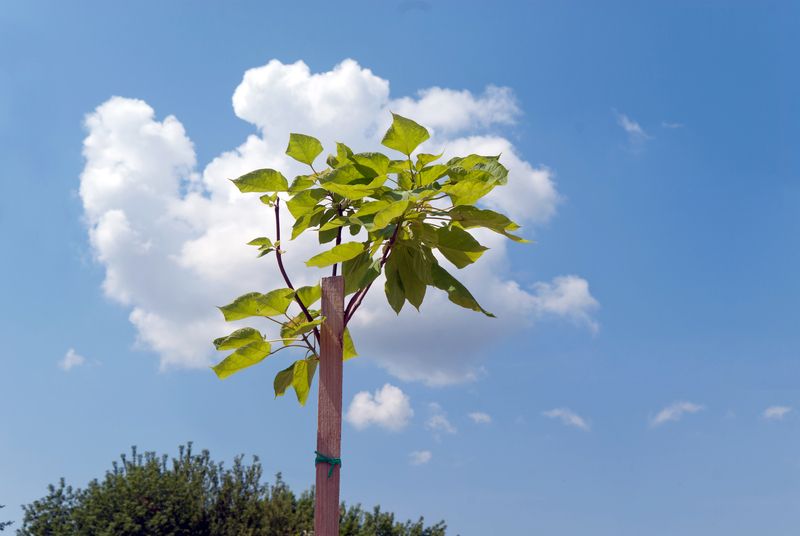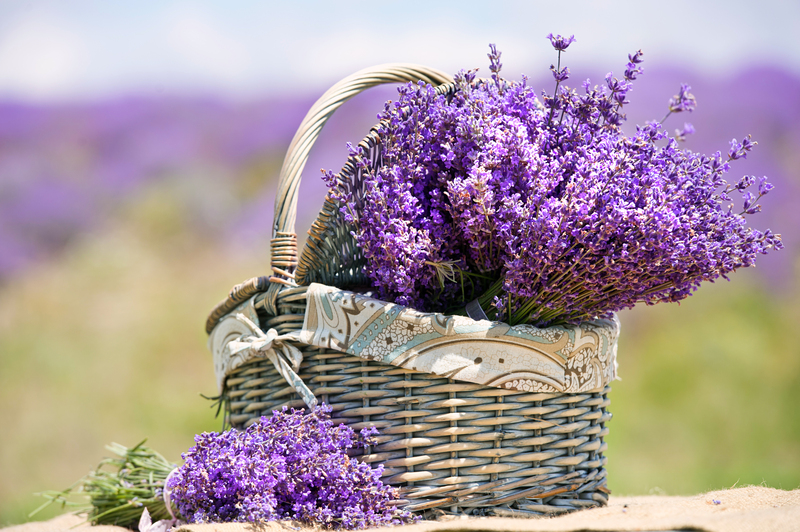Nine Steps to Kickstart Your Gardening Journey With Ease
Posted on 21/09/2025
Nine Steps to Kickstart Your Gardening Journey With Ease
Dreaming of vibrant blooms, fresh vegetables, or soothing green spaces right outside your door? Embarking on your gardening journey is an exciting way to connect with nature and promote personal well-being. Whether you have a small balcony or a spacious backyard, getting started in gardening is easier than you might think. This comprehensive guide will walk you through nine crucial steps to kickstart your garden and nurture it to success, even if you're a complete beginner. Read on for practical tips, expert advice, and inspiration on your road to becoming a confident horticulturist!
Step 1: Define Your Gardening Goals
Before you get your hands dirty, take a moment to reflect on your gardening aspirations. Are you dreaming of a lush ornamental garden, a productive vegetable patch, or simply looking to create a peaceful retreat with low-maintenance plants? Defining your garden goals will help you make decisions about layout, plant types, and maintenance requirements. Consider the following questions:
- What do you want to grow? (Flowers, herbs, vegetables, shrubs, or a mix?)
- How much time can you dedicate to gardening?
- Do you prefer organic gardening or are you comfortable with synthetic aids?
- What kind of outdoor space do you have available?
After answering these questions, jot down your gardening goals. These written objectives will act as your roadmap as you kickstart your garden. Remember, there is no right or wrong way to start - your garden should reflect your tastes and lifestyle.

Step 2: Assess Your Space and Conditions
Location is a key factor for gardening success. Evaluate your space carefully before purchasing plants or supplies. Some crucial aspects to consider include:
- Sunlight: Observe your garden at different times of the day. Most edibles need at least 6 hours of direct sunlight.
- Soil type: Grab a handful of soil and feel its texture. Is it sandy, clay, peaty, or loamy? Each type influences water retention and drainage.
- Drainage: Watch for puddles after rain to ensure your chosen spot doesn't hold excessive water, which can damage roots.
- Wind and microclimates: Fences, buildings, and trees can alter temperature and wind patterns, affecting plant health and growth.
Properly assessing your garden's unique conditions allows you to choose the right plants and set realistic expectations for your gardening journey.
Step 3: Research and Select the Right Plants
Selecting suitable plants is a pivotal stage as you start your gardening adventure. Begin by researching:
- USDA hardiness zone or your regional climate: Ensure your choices will thrive in your location year-round.
- Sun and water requirements: Match plants to the light and moisture levels your space provides.
- Native and pollinator-friendly plants: These options often require less maintenance and support local ecosystems.
Beginners should opt for resilient, easy-to-grow varieties such as marigolds, zinnias, sunflowers, tomatoes, or basil. If you're limited on space, consider container gardening, which is perfect for balconies and patios.
Pro Tip: Consult with local nurseries or extension services for region-specific recommendations - they're invaluable resources as you begin your gardening journey.
Step 4: Gather Essential Gardening Tools
To make your start into gardening smooth, invest in a basic toolkit. Having the right gardening tools ensures safety and boosts efficiency, making the process more enjoyable. As a beginner gardener, the following essentials are recommended:
- Hand trowel and fork: For digging, planting, and turning the soil.
- Gloves: To protect your hands from thorns, soil, and chemicals.
- Watering can or hose: Opt for one with a gentle spray head.
- Pruning shears: For trimming and maintaining healthy growth.
- Rake and spade: Particularly useful for larger gardens.
- Wheelbarrow or bucket: To make carrying soil, mulch, or compost easier.
Tip: Invest in quality tools that feel comfortable in your hands to ensure durability and reduce strain as you kickstart your gardening journey.
Step 5: Prepare Your Soil for Success
Nurturing good soil is essential for healthy plant growth. Well-prepared soil is the foundation of every successful garden, helping you avoid common pitfalls as you begin.
Steps to prepare your garden soil:
- Clear the area of weeds, debris, and rocks.
- Loosen the soil to about 6-12 inches deep using a fork or spade. This improves aeration and root penetration.
- Test your soil with a home kit or through your local cooperative extension to check pH levels and nutrient content.
- Amend as needed: Add compost or organic matter to enrich fertility, adjust pH with lime or sulfur, and address deficiencies based on the test results.
If you're gardening in containers, use purpose-made potting mixes for the best results.
Step 6: Plan Your Garden Layout Thoughtfully
A well-organized garden layout maximizes your space and simplifies maintenance. Sketch out your garden on paper or use digital tools to try different designs. Consider factors like:
- Plant heights: Place taller varieties at the back or center, with shorter plants in front for easy access and visual appeal.
- Companion planting: Some plants, like tomatoes and basil, grow better together and can deter pests naturally.
- Pathways: Leave room for easy walking and maintenance.
- Watering access: Ensure all plants can be easily reached for watering and care.
For edible gardens, rotate crops each year to maintain soil health and limit disease buildup. Thoughtful planning at this stage saves time and reduces frustration as your gardening journey progresses.
Step 7: Plant With Care
With your site and tools ready, it's time to plant! Follow these simple, effective steps for a successful start:
- Read plant tags or seed packets: These provide crucial details on spacing, depth, and care.
- Follow the recommended planting schedule for your region and species.
- Water gently but thoroughly after planting to settle roots.
- Mulch your beds to conserve moisture, suppress weeds, and regulate temperature.
Remember, patience is key as you set out on your first gardening experience. Don't worry if things aren't perfect; gardening is a learning process with room for trial and error.
Step 8: Establish an Easy Maintenance Routine
Caring for your garden regularly is crucial for thriving plants and a stress-free gardening journey. The best way to avoid being overwhelmed is to keep a simple schedule:
- Water consistently: Check soil moisture by sticking your finger an inch deep; water when it feels dry.
- Weed regularly: Don't let weeds take over and compete with your plants for resources.
- Monitor for pests and diseases: Learn to identify common signs, and act early with organic solutions where possible.
- Prune and deadhead: Removing spent flowers and trimming overgrown plants promotes new growth.
- Feed your plants: Use balanced fertilizers (preferably organic) as directed on the packaging.
Tip: Spend a few minutes each day observing your plants - regular attention helps you spot issues before they escalate.

Step 9: Celebrate and Learn From Your Experiences
Gardening is as much about personal growth as it is about growing plants. Embrace every stage of your gardening adventure:
- Celebrate successes: Enjoy your harvest, fragrant blooms, and peaceful space.
- Learn from setbacks: Every mistake brings you closer to mastery. Continue educating yourself through books, online communities, and gardening workshops.
- Document your journey: Keep a garden journal with notes on what worked, what didn't, and your favorite moments to refine your approach each year.
With each season, your knowledge will deepen, and your thumb will get greener. The gardening journey never truly ends - it only grows more rewarding!
Bonus Tips for Beginners to Boost Their Gardening Success
- Start small: It's better to have a manageable space and expand as your confidence grows.
- Use raised beds or containers: These are ideal for beginners, offering better control over soil and drainage.
- Join a local gardening club or online forum: You'll benefit from shared wisdom and make new friends who share your passion.
- Experiment with seed starting: Growing from seed is economical and immensely gratifying.
Conclusion: Your Garden, Your Adventure
Starting your gardening journey might seem daunting, but following these nine essential steps will make the process smooth, enjoyable, and fulfilling. With a clear plan, the right tools and plants, regular care, and a willingness to learn, you'll transform any space into a thriving garden oasis. Let your green adventure begin--one seed at a time!
Ready to embark on your gardening journey with ease? Share your ideas or questions below, and let's grow together!



